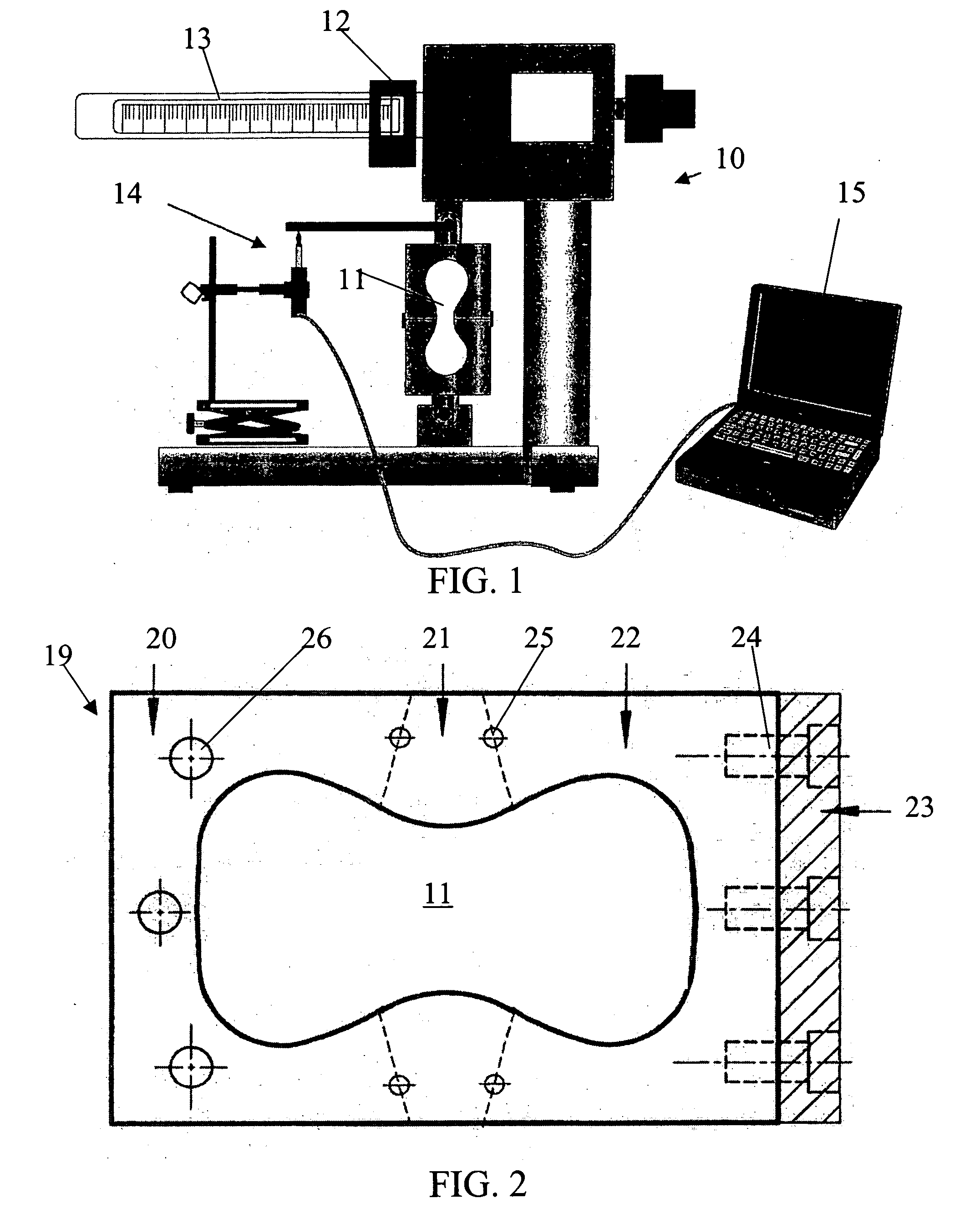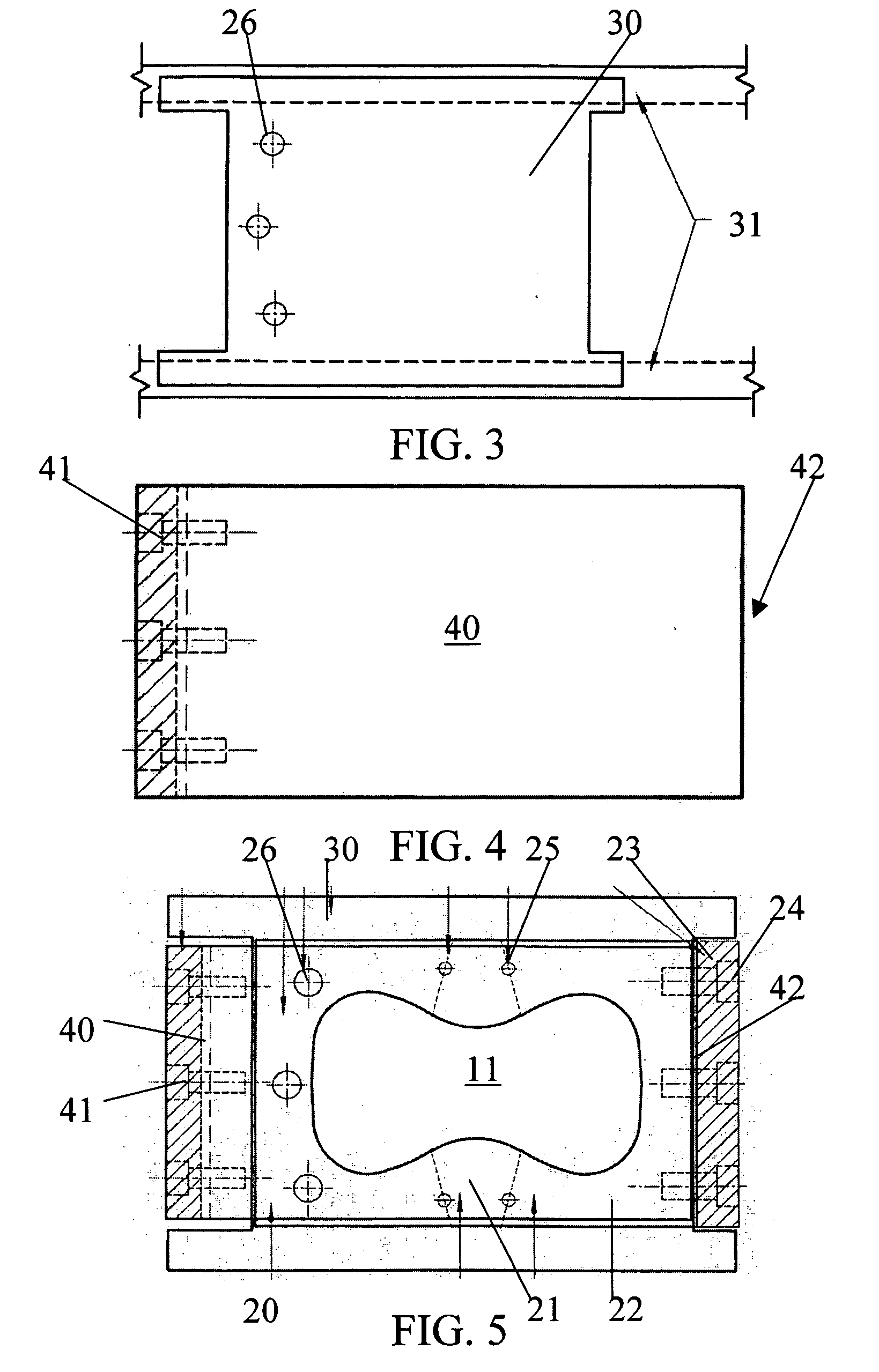Testing apparatus and method of deriving Young's modulus from tensile stress/strain relationships
a technology of tensile stress and relationship, applied in the direction of measurement devices, instruments, scientific instruments, etc., can solve the problems of brittleness of well cement compositions when cured, affecting isolation, and difficulty in obtaining wellbore isolation and maintaining mechanical integrity, etc., to achieve accurate measurement of tensile strength of various cement systems, improve fit for purpose designs, and improve the effect of mechanical properties
- Summary
- Abstract
- Description
- Claims
- Application Information
AI Technical Summary
Benefits of technology
Problems solved by technology
Method used
Image
Examples
examples
[0072] Three cement specimens were cured at atmospheric pressure, 198° F., and 20.0 ppg. The slurry design was used for this experiment was primarily Norcem AS G with 45% W-10+20% MPA-3+0.01797 gps CD-31L+0.0839 pgs R-15L+0.02 gps FP-6L. A maximum cycle load of 5000 N (2027 psi) was applied.
[0073] The deflection versus time graph in FIG. 9 shows the consistency of the deflection of the samples prior to failure. The peaks of the graphs are very similar and the time to failure of the three samples has a similar width on the X-axis.
[0074]FIG. 10 shows the flexural stress (psi) versus the deflection (inches) for one of these samples. The linear increase of deflection as the stress increased shows the consistency of the results. When the deflection is compared to the Young's Modulus, as shown in FIG. 11, the graph shows the flattening the Young's modulus as the sample's deflection nears the failure point.
[0075] Two additional samples are shown in FIG. 11 in a tensile strength test. Us...
PUM
| Property | Measurement | Unit |
|---|---|---|
| temperature | aaaaa | aaaaa |
| temperatures | aaaaa | aaaaa |
| Young's modulus | aaaaa | aaaaa |
Abstract
Description
Claims
Application Information
 Login to View More
Login to View More - R&D
- Intellectual Property
- Life Sciences
- Materials
- Tech Scout
- Unparalleled Data Quality
- Higher Quality Content
- 60% Fewer Hallucinations
Browse by: Latest US Patents, China's latest patents, Technical Efficacy Thesaurus, Application Domain, Technology Topic, Popular Technical Reports.
© 2025 PatSnap. All rights reserved.Legal|Privacy policy|Modern Slavery Act Transparency Statement|Sitemap|About US| Contact US: help@patsnap.com



